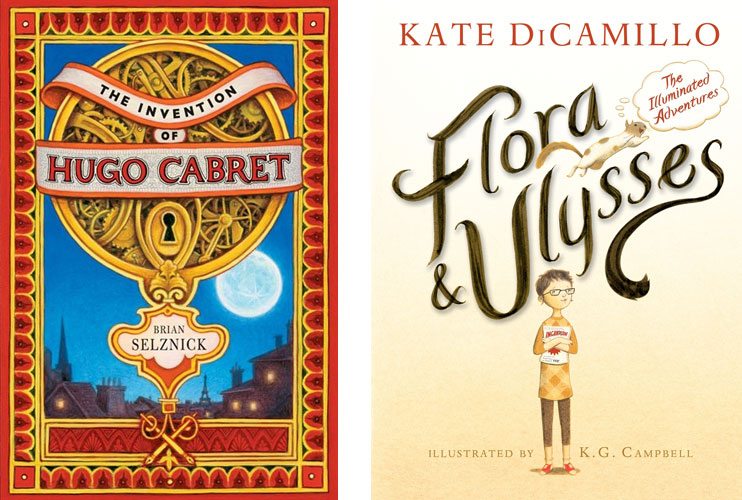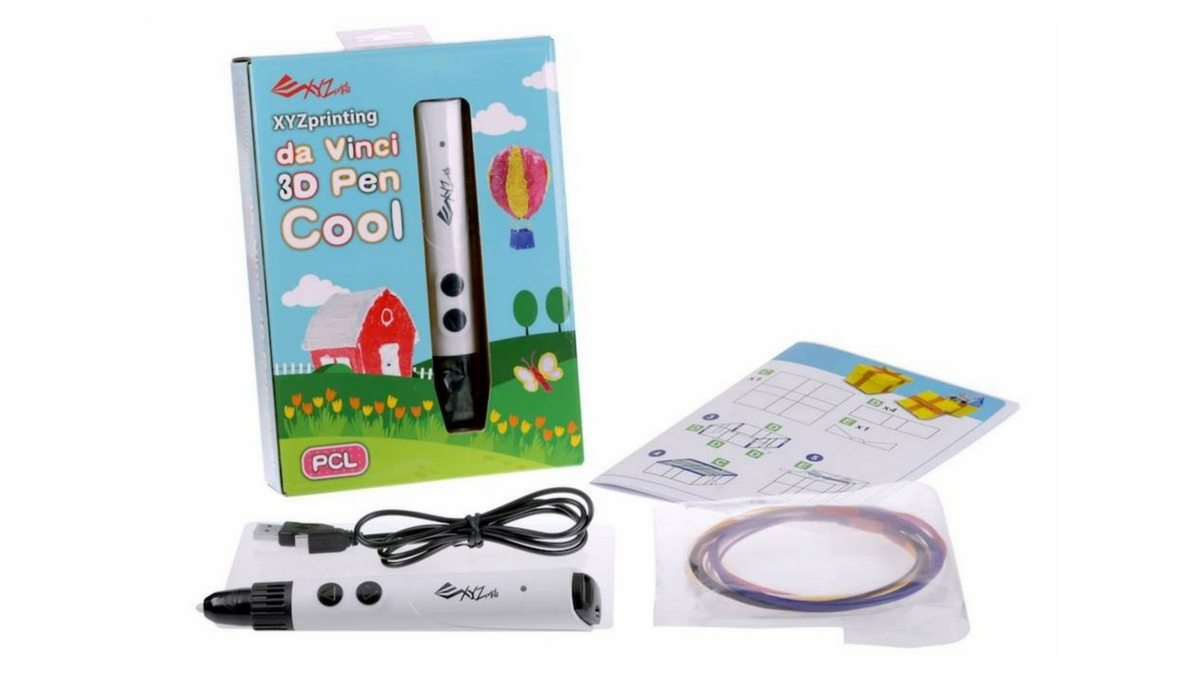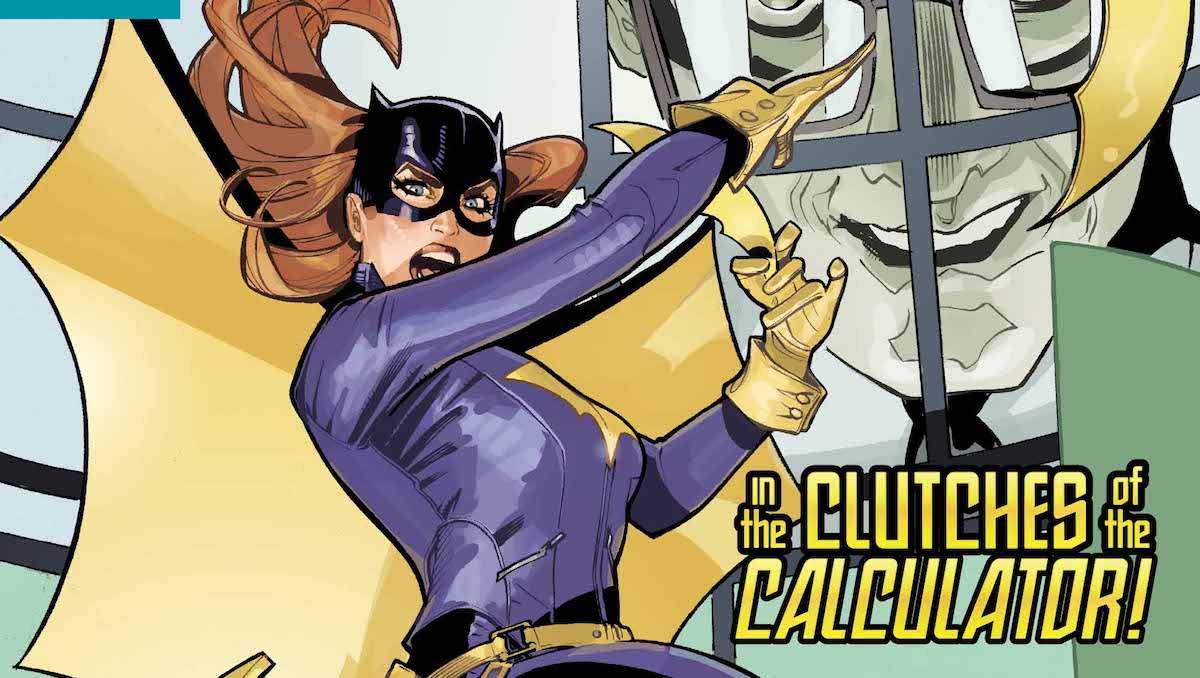Hey, I’m back–in less than a month, even! Today I’ll give a brief run-through of the books I’ve read this week, plus a couple other noteworthy titles.
First, though, the awards! Yesterday the American Library Association announced the winners of various awards children’s books and young adult books, including the Caldecott and Newbery Medals. The full list of award winners and honorees is here. Honestly, I didn’t know there were so many awards.
So, the winners of the big two: the Newbery Medal went to The Crossover by Kwame Alexander, a story in verse about two brothers, basketball, and the pain of growing apart. I actually haven’t read this, but I’ll bump it up my list and report back when I have. The Caldecott Medal went to The Adventures of Beekle: The Unimaginary Friend by Dan Santat, another one I actually haven’t read myself. But I am a fan of Santat’s artwork and I’ll take a look for this one, too. It’s about an imaginary friend looking for his match.
Of course, any time you look at a list of books, the ones you’ve already read tend to stand out. Of particular note to me was the fact that there were two graphic novels on the list of honorees. El Deafo by Cece Bell received a Newbery Honor, and This One Summer by Jillian Tamaki and Mariko Tamaki got a Caldecott Honor. It’s the first time a graphic novel has ever received a Caldecott Honor, and it will be interesting to see if this opens some doors to graphic novels and comics in the future. They’re both fantastic books (and were on my best books of 2014 list) but I do wonder a little about This One Summer getting the Caldecott, simply because I would recommend it for tweens and teens, rather than the usual elementary-school age that most Caldecott books are for. At any rate, I was happy to see both of these books earning some of the highest honors for children’s books.
Both the Caldecott and Newbery have honored comics-ish books before: The Invention of Hugo Cabret by Brian Selznick won the 2008 Caldecott–I guess that’s another example of a book for older kids that still won the award. It switches between sections of wordless images and words without pictures. And last year Flora and Ulysses by Kate DiCamillo took home the Newbery. It’s mostly prose, but there are sections (illustrated by K. G. Campbell) that are definitely comics.
It made me think a little about awards for comics for kids. Is the Caldecott or Newbery the best way to honor them? Should there be some sort of ALA award specifically for comics and graphic novels? Sure, the Eisner Awards are the big awards for comics, and there are categories there for various age groups. I’m not sure that the wider reading audience–I’m talking about folks who don’t frequent comic book shops, the ones who still think that comics are all fluff and no substance–is really aware of the significance of the Eisner awards, or would go seek out a book because it won an Eisner. I do know plenty of people, though, who collect books that have won Caldecotts or Newberys. A new award from the ALA, specifically for comics, certainly wouldn’t have the prestige (at least for a while) of the Big Two. So for now, I’m glad to see comics making their way into the mainstream even more.
Ok, on to the books I read this week!
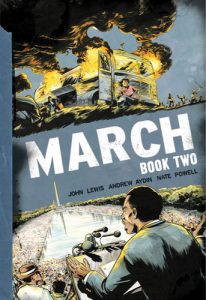 March: Book Two by John Lewis, Andrew Aydin, and Nate Powell continues the story of the civil rights movement, as told by Congressman John Lewis. Lewis was deeply involved with student activists, organizing Freedom Riders who took buses into segregated cities, and was one of the Big Six who spoke at the 1963 March on Washington. March is a graphic-novel trilogy that begins with Lewis as a child and will culminate in the march from Selma to Montgomery in 1965, and President Johnson’s signing of the Voting Rights Act. This volume picks up in 1960 and goes through the end of 1963.
March: Book Two by John Lewis, Andrew Aydin, and Nate Powell continues the story of the civil rights movement, as told by Congressman John Lewis. Lewis was deeply involved with student activists, organizing Freedom Riders who took buses into segregated cities, and was one of the Big Six who spoke at the 1963 March on Washington. March is a graphic-novel trilogy that begins with Lewis as a child and will culminate in the march from Selma to Montgomery in 1965, and President Johnson’s signing of the Voting Rights Act. This volume picks up in 1960 and goes through the end of 1963.
My daughter has just been studying the civil rights movement in middle school, and has been relating to me some of the footage she’s seen and stories she’s read in class. It’s hard for her to imagine the world that Lewis lived through, though she also knows that there are still echoes of the same prejudice and injustice today. These books are powerful. Although the events are abbreviated, there’s no hiding the violence and hatred suffered by blacks and, in some instances, those who supported them. It’s not a comfortable story, despite the interwoven scenes of Obama’s inauguration in 2009–meant to remind you that there’s a happy (or happier, at least) ending at the end. But it’s an important story, and I think the graphic novel format works really well. It’s one that I’d recommend for older kids–probably middle school and up–but definitely requires some parental discussion afterward. The language is toned down from what I’m sure Lewis actually heard, but there are still instances of the N word, and the depictions of violence may be too much for younger readers.
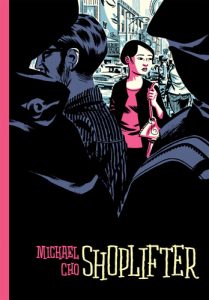 Shoplifter by Michael Cho is a short graphic novel about Corinna Park, a young woman who works for an ad agency. She realizes that it’s not what she wants to do with her life, and that she needs to shake up her life a bit. It’s not a very surprising book; the short length means that you meet Corinna, get a quick glimpse at why her life sucks, and then see her rapidly move toward her epiphany moment. There’s not a lot of before and after–it’s more focused on this one particular moment of her life, the turnaround. But it’s still worth a read–the artwork (done in a black, white, and pink palette) is nicely done and I like Cho’s illustration style. I do wish there could have been a little more, to be able to see Corinna’s character develop beyond this short snapshot. (Note for parents: this one’s definitely not for kids–single adults in the big city, you know.)
Shoplifter by Michael Cho is a short graphic novel about Corinna Park, a young woman who works for an ad agency. She realizes that it’s not what she wants to do with her life, and that she needs to shake up her life a bit. It’s not a very surprising book; the short length means that you meet Corinna, get a quick glimpse at why her life sucks, and then see her rapidly move toward her epiphany moment. There’s not a lot of before and after–it’s more focused on this one particular moment of her life, the turnaround. But it’s still worth a read–the artwork (done in a black, white, and pink palette) is nicely done and I like Cho’s illustration style. I do wish there could have been a little more, to be able to see Corinna’s character develop beyond this short snapshot. (Note for parents: this one’s definitely not for kids–single adults in the big city, you know.)
 Muddy Max: The Mystery of Marsh Creek by Elizabeth Rusch and Mike Lawrence is a funny one. Max lives in Marsh Creek, the muddiest town in the country, but his parents are really weird about mud. They insist that Max never gets muddy, which is tough to do when you’re a middle-school kid. But, lo and behold, one day when Max gets pushed into a mud puddle by the local bully, he discovers that mud gives him superpowers. With the help of his friend Patrick, he tests the limits of his powers … and discovers some odd secrets along the way.
Muddy Max: The Mystery of Marsh Creek by Elizabeth Rusch and Mike Lawrence is a funny one. Max lives in Marsh Creek, the muddiest town in the country, but his parents are really weird about mud. They insist that Max never gets muddy, which is tough to do when you’re a middle-school kid. But, lo and behold, one day when Max gets pushed into a mud puddle by the local bully, he discovers that mud gives him superpowers. With the help of his friend Patrick, he tests the limits of his powers … and discovers some odd secrets along the way.
It’s cute, and has a short section in the back about some of the science of mud. I was a little disappointed that Irie, the girl seen on the cover, doesn’t actually figure into the story a little more. But she does figure out Max’s secret right at the end, so it seems like the book is setting up for more of Irie later on. Another fun fact is that both the writer (Rusch) and illustrator (Lawrence) live here in Portland, Oregon–maybe the mud was inspired by the winter rainy season here. (Rusch is also the author of the non-fiction picture book Electrical Wizard about Nikola Tesla, which I mentioned in a Stack Overflow column in December.)
 After reading Mordechai’s post about comics for seven-year-old girls, I realized that I hadn’t read my copy of Cleopatra in Space by Mike Maihack (my daughter had run off with it and I had to track it down). It’s a fun one, with a bizarre premise: young Cleopatra is zapped into the future, where she meets talking cats and aliens in an Egyptian-themed, high-tech world. And, of course, her arrival has been prophesied, and she’s meant to save the galaxy. I did find a lot of similarities to Zita the Spacegirl (another favorite in my home), but that’s not necessarily a bad thing. It’ll go nicely with Zita and Missile Mouse: cute, spunky protagonists with nifty gadgets and otherworldly adventures.
After reading Mordechai’s post about comics for seven-year-old girls, I realized that I hadn’t read my copy of Cleopatra in Space by Mike Maihack (my daughter had run off with it and I had to track it down). It’s a fun one, with a bizarre premise: young Cleopatra is zapped into the future, where she meets talking cats and aliens in an Egyptian-themed, high-tech world. And, of course, her arrival has been prophesied, and she’s meant to save the galaxy. I did find a lot of similarities to Zita the Spacegirl (another favorite in my home), but that’s not necessarily a bad thing. It’ll go nicely with Zita and Missile Mouse: cute, spunky protagonists with nifty gadgets and otherworldly adventures.
I noticed that Book 2: The Thief and the Sword is due out in April this year, so I’ll be watching for that one. And it appears that before Maihack turned it into an all-ages comic, Cleopatra in Space was a webcomic intended for slightly older audiences, so I’ll probably go check that out and see what the first incarnation of Cleopatra was like, too.
 And while I was reading comics about girls, I also found my review copy of Dragon Girl: The Secret Valley by Jeff Weigel. Alanna and Hamel are orphans–Hamel has inherited his dad’s blacksmith shop, but it’s hard work and he can’t always keep an eye out on his rambunctious little sister. When she discovers a cave full of dragon eggs, she doesn’t know she’s supposed to fear them and instead befriends them. In the meantime the Sir Cedric the legendary dragonslayer turns up to get his shield repaired.
And while I was reading comics about girls, I also found my review copy of Dragon Girl: The Secret Valley by Jeff Weigel. Alanna and Hamel are orphans–Hamel has inherited his dad’s blacksmith shop, but it’s hard work and he can’t always keep an eye out on his rambunctious little sister. When she discovers a cave full of dragon eggs, she doesn’t know she’s supposed to fear them and instead befriends them. In the meantime the Sir Cedric the legendary dragonslayer turns up to get his shield repaired.
The illustrations are in black and white, and are done in a more realistic style than a lot of the other comics intended for kids–something along the lines of Prince Valiant, which fits the setting of the story. But although the artwork looks like it could be from an earlier era, the story certainly has modern sensibilities. Alanna is young and naive, but also pretty clever and fearless, and she makes a great protagonist. Oh, and the dragons are pretty awesome, too.
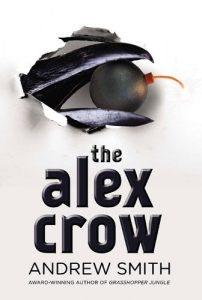 I did finish reading The Alex Crow by Andrew Smith. (Incidentally, Smith also won a Printz Honor for Grasshopper Jungle, my favorite young adult book from 2014.) It didn’t grab me right from the start the way Grasshopper Jungle did, but once I got a few chapters in, I was hooked. The book jumps between a few different stories–a young refugee who is the sole survivor of a bombing attack on his village; a disastrous attempt in the 1880s to reach the North Pole; a crazy man who hears the voice of Joseph Stalin and is convinced he is being followed by invisible drones; a camp for rehabilitating boys addicted to videogames.
I did finish reading The Alex Crow by Andrew Smith. (Incidentally, Smith also won a Printz Honor for Grasshopper Jungle, my favorite young adult book from 2014.) It didn’t grab me right from the start the way Grasshopper Jungle did, but once I got a few chapters in, I was hooked. The book jumps between a few different stories–a young refugee who is the sole survivor of a bombing attack on his village; a disastrous attempt in the 1880s to reach the North Pole; a crazy man who hears the voice of Joseph Stalin and is convinced he is being followed by invisible drones; a camp for rehabilitating boys addicted to videogames.
I expected, of course, that eventually Smith would weave all these stories together somehow, and you start to see some threads coming together throughout the book. One theme, shared with Grasshopper Jungle, is the unintended consequences of scientific progress. Another theme is that teenage boys can be crass, horny, and often make pretty poor choices. If you want a crazy, wild ride, put The Alex Crow on your list. It’s due on March 10, but you can pre-order it now.
Speaking of teenage boys and poor choices… I’m currently reading We Should Hang Out Sometime: Embarassingly, a True Story by Josh Sundquist. But more on that next time!
 One last book that I must tell you about: The Sculptor by Scott McCloud, which just released today. McCloud is well-known for Understanding Comics (and the two follow-ups), a well-researched treatise on comics done in a comic-book format. He’s done a lot of other stuff as well (I got myself a copy of the collected Zot!) but I’ve long admired him for the way he explores how comics work. The Sculptor is his magnum opus–it’s a 500-page graphic novel about creating and growing up and death. And superpowers.
One last book that I must tell you about: The Sculptor by Scott McCloud, which just released today. McCloud is well-known for Understanding Comics (and the two follow-ups), a well-researched treatise on comics done in a comic-book format. He’s done a lot of other stuff as well (I got myself a copy of the collected Zot!) but I’ve long admired him for the way he explores how comics work. The Sculptor is his magnum opus–it’s a 500-page graphic novel about creating and growing up and death. And superpowers.
The main character, David Smith, is a sculptor–but not the famous David Smith that everyone else has heard of. Our David Smith is down on his luck, hasn’t sold a piece in a long time, just lost his job (flipping burgers), and is about to lose his apartment, too. But then he’s given a choice, an opportunity: he could get a different job, meet a nice woman, settle down, make art in his basement until the itch goes away … or he could become the sculptor he’s always wanted to be, but with a price. He’ll only have 200 days to live–but he’ll have left behind an amazing legacy.
Of course, David chooses the latter, and then things get interesting. He meets the girl of his dreams–but she’s taken. He unleashes his new abilities to create amazing sculptures, but he still can’t sell anything. That part of the story is one that any artist can relate to: what do I create? And the other question David struggles with is one that all of us wrestle with more and more as we get older: what will I leave behind? What can I do that will make a lasting impact on the world?
This is book you’ll want to zip through because you want to know what happens, but it’s worth taking the time to really look at everything that McCloud has put into it, too. The way he uses white space, small panels or images that bleed to the page edge, lettering effects, frames with no words … It’s one thing to read theories about how comics work, but it’s another to see it in practice.
Again, this is definitely one for grown-ups only: the themes in it are for mature readers, as well as some of the language and images. But if you love serious comics, you should definitely put The Sculptor on your list.
Disclosure: GeekDad received review copies of several of the books mentioned in this post.



